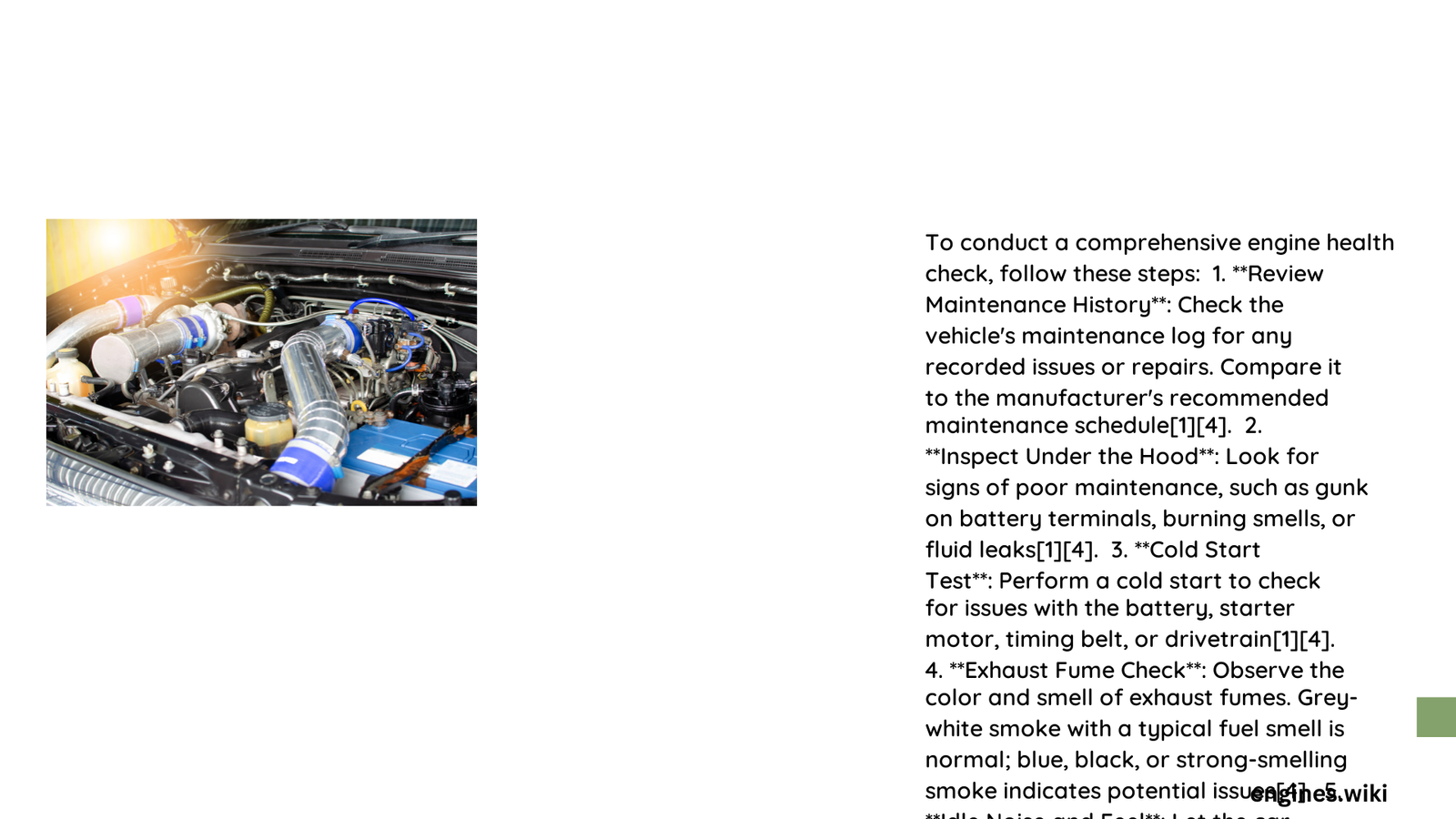An engine health check is a critical diagnostic process that evaluates a vehicle’s engine performance, detecting potential issues before they escalate into costly repairs. By systematically examining key parameters like oil pressure, coolant temperature, emissions, and mechanical wear, automotive professionals and vehicle owners can proactively maintain engine efficiency, prevent unexpected breakdowns, and extend the vehicle’s operational lifespan.
What Are the Essential Parameters in an Engine Health Check?
Why Monitor Engine Oil Pressure?
Engine oil pressure is a crucial indicator of overall engine health. Normal oil pressure typically ranges between 20-60 PSI during operation. Low pressure can signal:
- Worn engine bearings
- Oil pump malfunction
- Insufficient lubrication
- Potential internal engine damage
Oil Pressure Diagnostic Checklist
| Pressure Range | Condition | Recommended Action |
|---|---|---|
| 0-10 PSI | Critical Low | Immediate Engine Inspection |
| 10-20 PSI | Below Normal | Comprehensive Lubrication System Check |
| 20-60 PSI | Normal Range | Regular Maintenance |
| 60+ PSI | Potentially Blocked Oil Passages | Professional Evaluation |
How Do Diagnostic Tools Assess Engine Performance?
Modern diagnostic tools provide comprehensive insights into engine health:
- On-Board Diagnostics (OBD-II)
- Real-time performance monitoring
- Error code identification
- Fuel system analysis
-
Emission control assessment
-
Advanced Sensor Systems
- Vibration analysis
- Crankshaft position monitoring
- Temperature differential tracking
- Predictive maintenance capabilities
What Contaminants Indicate Engine Wear?
Engine oil analysis reveals critical wear indicators:
- Metal Particle Concentration
- Iron: Indicates cylinder wall or piston ring wear
- Copper: Suggests bearing degradation
-
Aluminum: Potential issues with pistons or cooling system
-
Non-Metal Contaminants
- Fuel dilution
- Coolant intrusion
- Excessive carbon deposits
How Often Should Engine Health Checks Be Performed?
Recommended Frequency:
– Passenger vehicles: Every 5,000-7,500 miles
– Commercial/Heavy-duty vehicles: Every 3,000-5,000 miles
– High-performance engines: Quarterly inspections
What Are Warning Signs of Potential Engine Problems?
Critical Red Flags:
– Unusual engine noises
– Decreased fuel efficiency
– Excessive exhaust smoke
– Vibration during operation
– Check engine light activation
Advanced Diagnostic Techniques

Vibration Analysis Methods
Professionals use sophisticated techniques to assess engine condition:
- Frequency spectrum analysis
- Amplitude measurement
- Harmonic pattern recognition
- Comparative baseline tracking
Emission Testing Protocols
Comprehensive emission tests evaluate:
– Carbon monoxide levels
– Hydrocarbon emissions
– Nitrogen oxide concentration
– Oxygen sensor performance
Conclusion
Regular engine health checks are not just maintenance—they’re an investment in your vehicle’s longevity and performance. By understanding diagnostic parameters and utilizing advanced monitoring techniques, vehicle owners can prevent costly repairs and ensure optimal engine efficiency.
